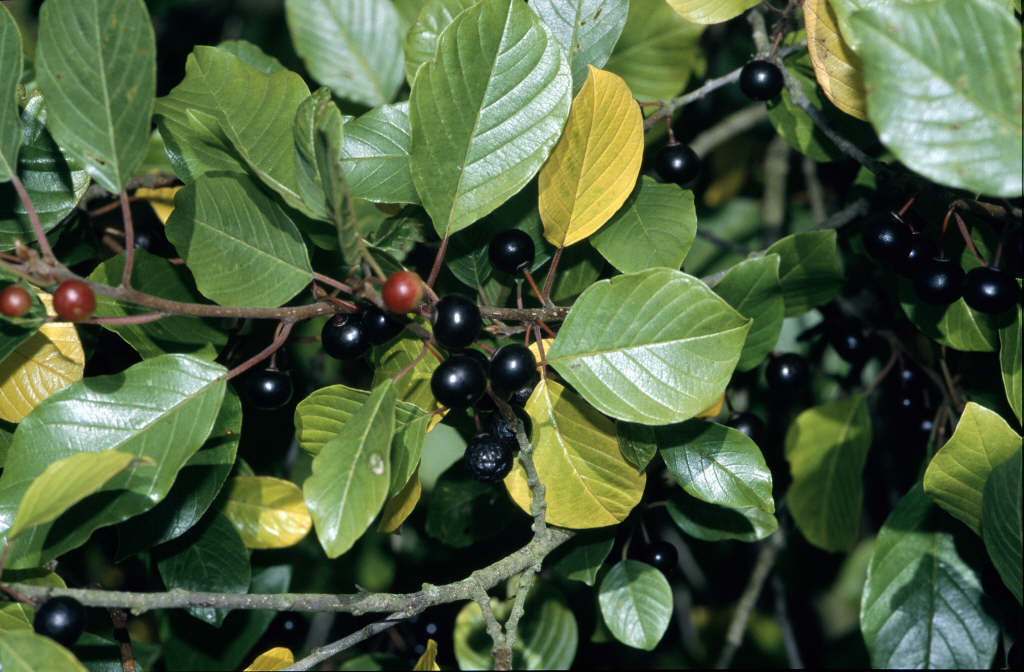Frangula alnus
alder buckthorn
A large, bushy deciduous shrub to 5m tall, with glossy rounded to ovate dark green leaves which turn yellow or red in autumn, and clusters of small greenish flowers in late spring and early summer, followed by bright red berries which ripen to black
Synonyms
Rhamnus frangulaFrangula dodonei
Size
Ultimate height
4–8 metresTime to ultimate height
5–10 yearsUltimate spread
2.5–4 metresGrowing conditions
Moisture
Moist but well–drainedpH
Acid, Alkaline, NeutralColour & scent
| Stem | Flower | Foliage | Fruit | |
| Spring | Yellow Green | Green | ||
|---|---|---|---|---|
| Summer | Yellow Green | Green | ||
| Autumn | Red | Red Black | ||
| Winter |
Position
- Full sun
- Partial shade
Aspect
West–facing or East–facing or South–facing or North–facing
Exposure
Exposed or Sheltered Hardiness
H7Botanical details
- Family
- Rhamnaceae
- Native to GB / Ireland
- Yes
- Foliage
- Deciduous
- Habit
- Bushy
- Potentially harmful
- Humans/Pets (dogs): Harmful if eaten. Wear gloves and other protective equipment when handling For further information and contact numbers regarding pets, see the HTA guide to potentially harmful plants
- Genus
Frangula can be deciduous or evergreen shrubs or trees, with simple leaves that often colour well in autumn, and tiny yellowish flowers followed by red or black fruit
- Name status
Correct
- Plant range
- Europe, Asia & Africa
How to grow
Cultivation
Grow in moist but well-drained soil in sun or part shade. Flowers are attractive to bees. Suitable for hedging, wild or woodland gardens
Propagation
Propagate by seed or semi-ripe cuttings in early summer
Suggested planting locations and garden types
- Cottage and informal garden
- Wildflower meadow
- Wildlife gardens
- Hedging and screens
Pruning
Minimal pruning required, see pruning group 1; trim hedges in early spring
Pests
Generally pest-free
Diseases
Generally disease-free
Get involved
The Royal Horticultural Society is the UK’s leading gardening charity. We aim to enrich everyone’s life through plants, and make the UK a greener and more beautiful place.
